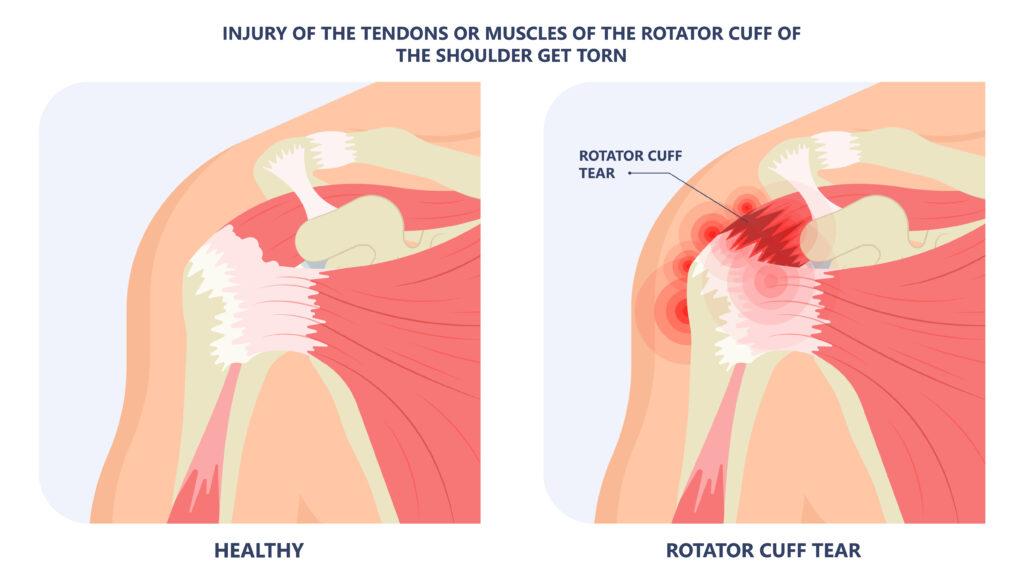Rotator Cuff Tear & Tendonitis Treatment in Manhattan Beach and Torrance, CA
The shoulder joint is a ball and socket joint. The upper arm bone, or humerus, forms the ball while the shoulder blade, or scapula, forms the socket. The rotator cuff is a group off our muscles that start on the scapula and attach via tendons on to the top of the humerus. Tendons attach muscle to bone. The rotator cuff muscles function to elevate and rotate the arm.
Rotator cuff injuries are very common. Over 2 million people will visit a doctor each year for rotator cuff problems. The rotator cuff muscles have tendons that may tear off the top of the humerus. The rotator cuff tendons may also get inflamed or injured without a tear. This is called tendonitis.

Don’t let shoulder pain limit your movements and hinder your daily activities. Beach Cities Orthopedics and Sports Medicine, a renowned orthopedic surgery clinic in Manhattan Beach and Torrance, California, offers specialized solutions for rotator cuff injuries to help you regain strength and restore function.
Dr. Morgan cares for patients in Manhattan Beach, Torrance and surrounding areas. Take the first step toward a stronger rotator cuff today! Call 310-546-3461 to schedule your appointment with Dr. Morgan today!
What are the Symptoms of a Rotator Cuff Tear?
Symptoms of a rotator cuff problem include pain on the side shoulder. Sometimes this pain travels down to the elbow. Pain is usually worse with overhead activity or reaching behind your back. A torn rotator cuff will usually lead to weakness. In the setting of rotator cuff tendonitis, strength remains intact.
Tears can be traumatic, or chronic, degenerative tears. Traumatic tears happen due to a fall or hyperextension injury to the shoulder. A pop can be felt. Immediate pain, weakness and lack of range of motion are common. Rotator cuff tears that are degenerative tend to occur over a period of years from daily wear and tear. Since the rotator cuff tendon attachment site doesn’t have a strong blood supply, when a tear occurs, it cannot repair itself and the tear gets bigger over time.
How is Tendonitis Treated?
Tendonitis typically improves with non-operative treatment. Physical therapy, anti-inflammatories and cortisone injections help reduce pain and restore function. An MRI scan is ordered to diagnose a tear. In the setting of a rotator cuff tear, surgery may be required to improve pain and function.